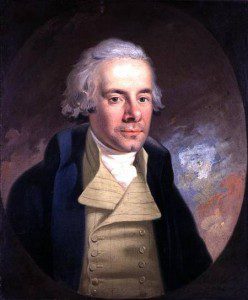
After a solid introductory chapter describing the political, economic, and cultural setting of the pre-Victorian era, Wolffe devotes two chapters to revivalism. Since so much of evangelicalism during this period revolved around revivalism and revivalists, these chapters provide a good chronological overview to evangelicalism in the period.
Like the other volumes in the series, Wolffe treats evangelicalism as a transnational movement. Although the transatlantic story receives the most attention, he also includes Australia. Chapter 3, “New Measure Revivalism, 1820-1850” serves as an example of his approach. There, he recounts the manner in which camp meetings were institutionalized in America (76), while caution towards revivalism was the order of the day among evangelicals in Britain (76-77). In comparison, although a few local revivals occurred in Australia, it was mostly “hard pastoral and missionary labour” that spread evangelicalism across that continent, not revivalism (88). In so doing, Wolffe reminds readers what historians of revivalism have known for quite some time: “much evangelical church growth occurred through the slow but steady recruitment of individuals rather than through the mass conversions associated with revivals (87).” Even so, he does not downplay the impact of the Second Great Awakening, particularly the manner in which it catalyzed evangelical expansion into previously unaffected groups such as the large African American population in the United States.
Subsequent chapters are entirely thematic, although chronological developments are noted. In the fourth chapter, utilizing journals, obituaries, and other rimary sources, Wolffe describes evangelical spirituality by tracing the “evangelical life cycle,” which centers on the conversion experience (93). He also describes corporate worship, noting that for evangelicals there was “no straightforward distinction between private spirituality and public worship (107).” Along those lines—and following recent trends in historiography—Wolffe gives special attention to the developing use of hymns, which were “an important bridge between collective worship and individual spirituality” (118).
Chapter five treats topics related to marriage and family, and while Wolffe’s own sympathies clearly lie with a more egalitarian interpretation of women’s roles in evangelical history, he treats the topic fairly. He reminds readers that women, who made up most of the church membership, were crucial to evangelical expansion (138), and also discusses the leveling effect of conversion (139-40), and the sharing of family responsibilities that was common in the period (140-41). In addition, he provides a helpful corrective in two regards. First, he challenges “separate spheres” historiography, dealing with evangelicalism qua evangelicalism rather than reading evangelical positions as simply the religious manifestation of a larger cultural movement (137-78). Second, although he notes the connection between some forms of evangelicalism and early feminism, he is careful to point out that the relationship was never a comfortable one. For example, he reminds readers that even though Antoinette Brown was a graduate of Oberlin, she also became a Unitarian—a position that was anathema to evangelicals (137).
In the last three chapters, Wolffe echoes Sidney Mead’s analysis of evangelicalism, assessing that the apparent evangelical unity of the early nineteenth-century was in reality merely a “superficial coherence” that emerged from the organizational efforts of evangelicals regarding specific issues (181). As a result, although they proved an “effective leaven in the dough of political life (215),” evangelicalism was much more fragmented than their cause-driven unity seemed to indicate, something that became visibly clear in the years following 1840 as the American Civil War approached.
The main strengths of this volume are five-fold. First, although informed by solid scholarship, it is immensely readable. Second, Wolffe carefully situates evangelicalism within its larger cultural context, demonstrating how the causal relationship between evangelicalism and society ran both ways: social factors influenced revivalism and, as revivalism transformed evangelicalism, society was transformed by evangelicalism. Third, as in the rest of the volumes in the series, Wolffe resists an American-centric approach and effectively portrays evangelicalism as the transnational movement that it was. Fourth, although the “great man” approach to history is no longer in vogue, Wolffe’s treatment of Finney in chapter three reminds readers that sometimes it is still the most valid interpretive tool; at times, powerful historical actors shape the course of historical movements. After the maturation of his revival techniques at Rochester in 1831 and the perpetual publication of his Lectures on Revivals of Religion beginning in 1835, Finney’s new measures shaped the future of English-speaking evangelicalism (69-85); his influence extends to the present-day, both in terms of practice and theology. Finally, although a bit tedious in its numerical analysis, Wolffe’s final chapter, “Diversity and Unity in the Expansion of Evangelicalism,” accurately captures the paradoxical nature of evangelicalism. Then, as now, evangelicals are divided over the particulars of ecclesiology, various points of doctrine, and political issues, while still sensing a real solidarity with other “born again” Christians.
For these reasons, The Expansion of Evangelicalism is well-suited for an educated readership (particularly historically-interested pastors), while fitting comfortably on library shelves as a reference book and on course syllabi at the college and seminary level. Alongside the other books in the series, it also serves well in aiding the preparation of lectures.
Note 1: IVP published Brian Stanley’s The Global Diffusion of Evangelicalism: The Age of Billy Graham and John Stott –a book I hope to review on The Anxious Bench soon–earlier this year, completing its four-book History of Evangelicalism Series. Everyone interested in the history of evangelicalism should purchase a set.
Note 2: I will post the second installment of Blue Crabs and Evangelicals on November 20th while I am in Baltimore attending the Annual Meeting of the Evangelical Theological Society (ETS).













